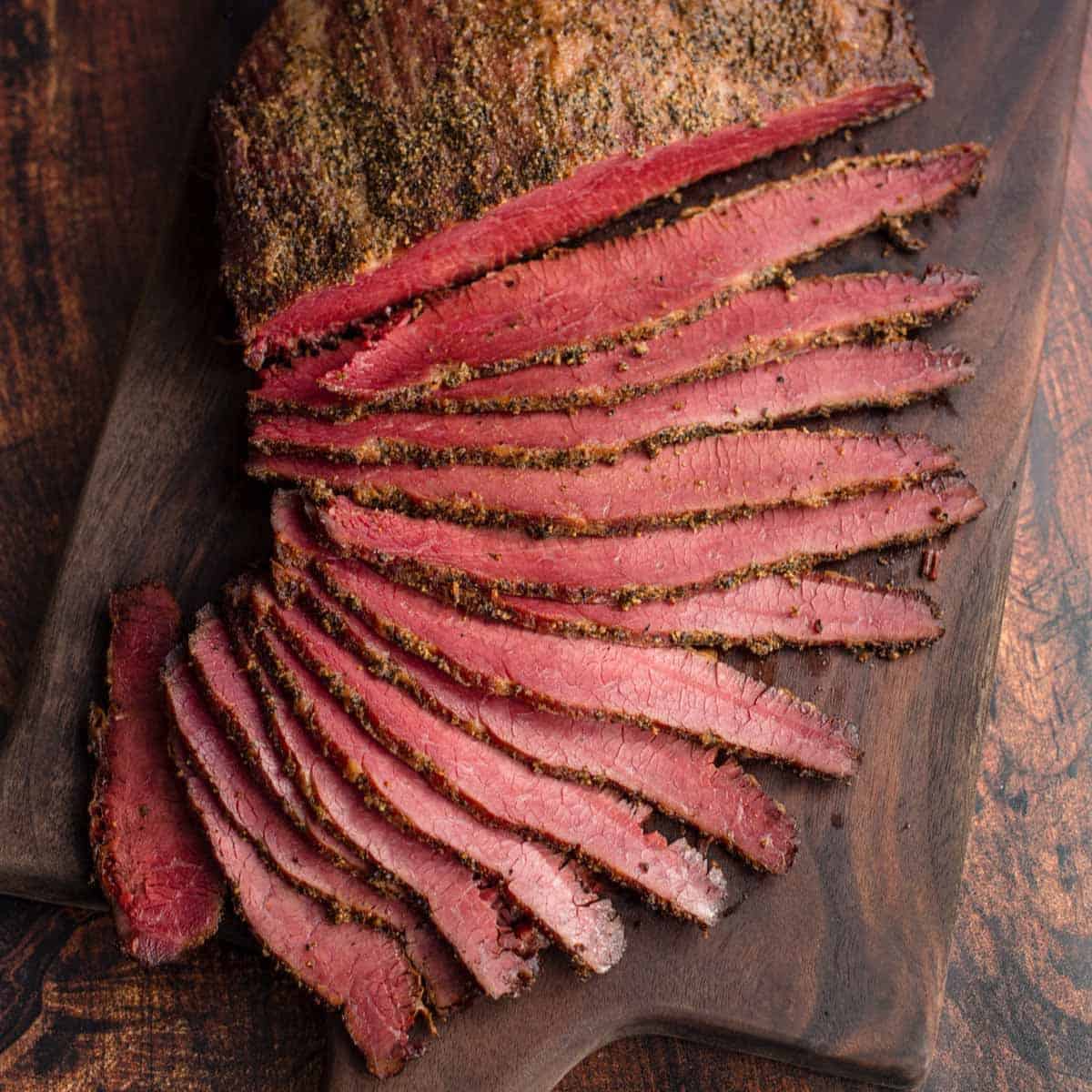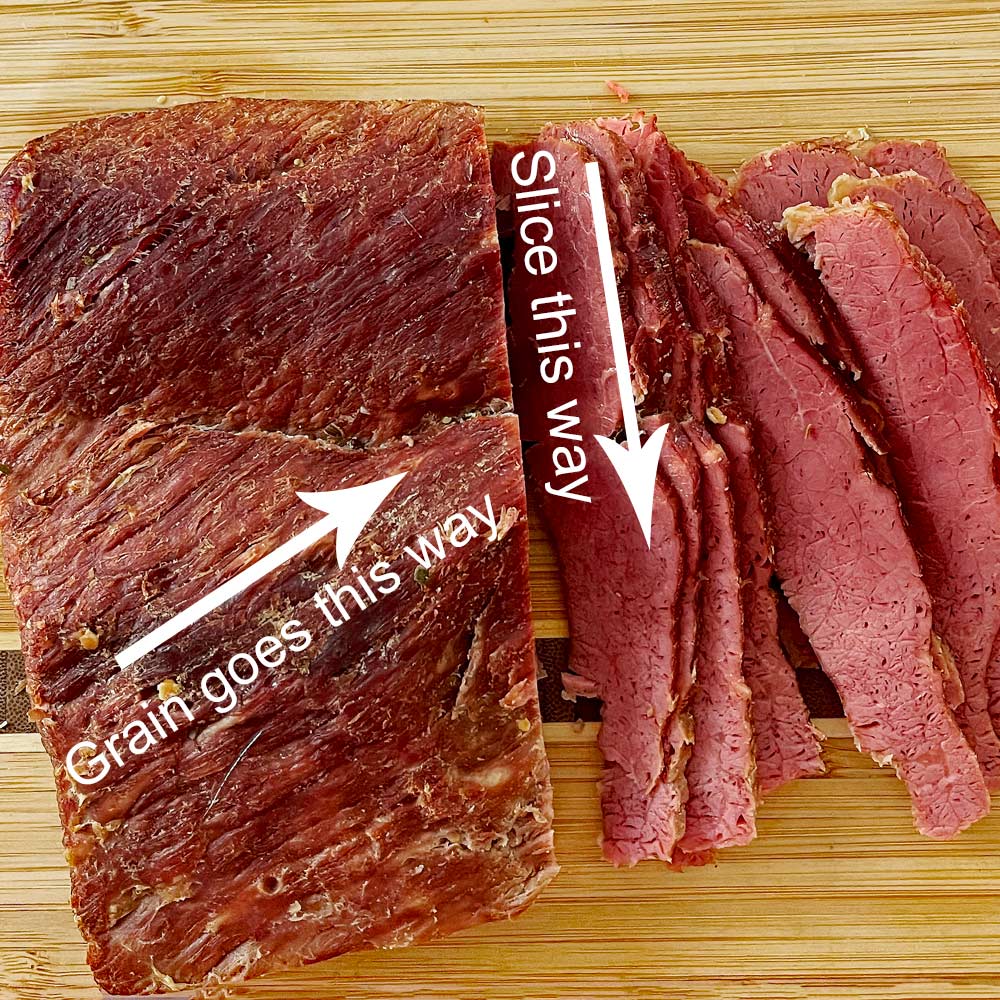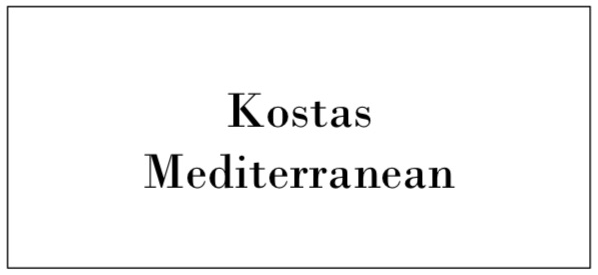Introduction

In the world of deli meats, two popular options that often leave people puzzled are corned beef and beef brisket. While they may have some similarities, there are distinct differences between these two meats in terms of their preparations, flavors, and culinary uses. In this article, we will delve into the historical background of corned beef and beef brisket, explore their unique characteristics, and compare them nutritionally. Additionally, we will provide insights into their culinary uses, offering a range of recipes and serving suggestions. By the end of this article, you will be equipped with the knowledge to choose the right deli meat for your next meal.
Historical Background Of Corned Beef And Beef Brisket
The history of corned beef can be traced back to ancient times, where it was a preservation method used to store meat. The process of corning meat involves curing it with salt and other spices, creating a brine that helps preserve the meat and give it its characteristic flavor. This technique was popularized by Irish immigrants in the United States, who brought their tradition of corned beef with them. Beef brisket, on the other hand, has been a staple in Jewish cuisine for centuries, with its origins in Eastern Europe. It was traditionally prepared by slow-cooking the tough cut of meat to create tender and flavorful results. Today, both corned beef and beef brisket continue to be beloved deli meats, enjoyed in various cuisines around the world.
Corned Beef Overview
Corned beef is a popular deli meat known for its distinct flavor and texture. It is made from beef brisket that has been cured in a brine mixture of salt, water, and spices. The curing process gives the meat its signature pink color and enhances its tenderness and flavor. Corned beef can be found in various forms, such as thinly sliced for sandwiches or in larger cuts for slow cooking. It is commonly enjoyed in dishes like Reuben sandwiches, corned beef hash, and boiled dinners. Its versatility and unique taste make it a favorite among deli meat lovers.
Corned Beef: Process And Ingredients

The process of making corned beef involves a few simple steps. First, a brine mixture is prepared using salt, water, sugar, and various spices such as peppercorns, coriander, and bay leaves. The beef brisket is then submerged in the brine solution and left to soak for several days, allowing the flavors to enhance the meat. The curing process gives the corned beef its signature pink color and distinctive taste. Once cured, the beef brisket can be cooked in different ways, such as boiling or slow cooking, to further develop its flavor and tenderness.
Corned Beef: Popular Dishes And Cultural Significance
Corned beef is widely used in culinary traditions around the world, showcasing its cultural significance. In Ireland, it is a key ingredient in the classic dish, corned beef and cabbage. In the United States, corned beef is a staple in Reuben sandwiches and is often served with potatoes. In the Caribbean, it is a key ingredient in dishes like corned beef hash. The popularity of corned beef during St. Patrick’s Day celebrations has also become a cultural tradition in many countries. Its rich flavor and versatility make it a beloved ingredient in a variety of dishes.
Beef Brisket Overview
Beef brisket is a popular cut of meat known for its rich flavor and tender texture. It is taken from the chest area of the cow and is composed of the pectoral muscles. Brisket can be divided into two sections: the flat and the point. The flat is leaner and tends to dry out more easily, while the point has more marbling and is more flavorful. This cut of meat is often used in barbecue and smoked dishes, as well as in traditional Jewish cuisine for dishes like pastrami. Beef brisket requires slow cooking methods, such as braising or smoking, to achieve its tender and delicious results.
Beef Brisket: Cuts, Grades, And Preparation

Beef brisket, a cut taken from the chest area of the cow, can be divided into two sections: the flat and the point. The flat is leaner, while the point has more marbling and flavor. When purchasing brisket, it is important to consider the grade. The highest grade is Prime, followed by Choice, and Select. Prime grade brisket generally has more marbling and tenderness. Before cooking, it is important to trim the excess fat and season the brisket with spices or a dry rub to enhance the flavor. Slow cooking methods, such as braising or smoking, are typically used to achieve the desired tenderness.
Beef Brisket: Cooking Methods And Flavor Profile
Beef brisket is known for being a tough cut of meat that requires slow cooking methods to achieve tenderness. Some popular cooking methods for beef brisket include braising, smoking, and slow roasting. Braising involves searing the brisket on high heat and then simmering it in a liquid, such as beef broth or barbecue sauce, for several hours until it becomes fall-apart tender. Smoking the brisket adds a distinctive smoky flavor, while slow roasting in the oven allows the meat to cook low and slow, resulting in a tender and flavorful dish. The flavor profile of beef brisket is rich, beefy, and often enhanced by the spices and seasonings used in the cooking process.
Nutritional Comparison
When it comes to comparing the nutritional profiles of corned beef and beef brisket, there are some notable differences. Corned beef tends to be higher in calories and fat, with approximately 270 calories and 15 grams of fat per 3-ounce serving. It is also higher in sodium due to the curing process, which can pose health implications for those with high blood pressure or other sodium-sensitive conditions. On the other hand, beef brisket is generally leaner, with a lower calorie and fat content. It is a good source of protein and can be part of a healthy diet in moderation.
Corned Beef Vs. Beef Brisket: Calories And Nutrients

When comparing the nutritional profiles of corned beef and beef brisket, there are notable differences. Corned beef tends to be higher in calories and fat, with approximately 270 calories and 15 grams of fat per 3-ounce serving. On the other hand, beef brisket is generally leaner, with lower calorie and fat content. It is a good source of protein and can be part of a healthy diet in moderation. It is important to note that corned beef can be higher in sodium due to the curing process, which may pose health implications for individuals with high blood pressure or sodium-sensitive conditions.
Corned Beef Vs. Beef Brisket: Sodium Content And Health Implications
When it comes to sodium content, corned beef tends to be higher than beef brisket. This is due to the curing process where salt is used to preserve the meat. While both deli meats should be enjoyed in moderation, individuals with high blood pressure or sodium-sensitive conditions should be cautious with their consumption of corned beef. Excessive sodium intake can lead to increased blood pressure and other health issues. On the other hand, beef brisket, being leaner, generally has a lower sodium content, making it a better option for those watching their sodium intake.
Culinary Uses
Corned Beef: Recipes and serving suggestions
Corned beef is a versatile ingredient that can be used in a variety of dishes. It is commonly enjoyed in sandwiches, such as the classic Reuben sandwich, where it is layered with sauerkraut, Swiss cheese, and Russian dressing on rye bread. Another popular dish is corned beef and cabbage, a traditional Irish meal that is often served on St. Patrick’s Day. Corned beef can also be diced and added to hash, or shredded and used as a filling for empanadas or pastries. Its rich and savory flavor adds depth to soups, stews, and casseroles.
Beef Brisket: Traditional dishes and modern interpretations
Beef brisket is often slow-cooked to achieve a tender and flavorful result. It is a popular choice for barbecuing, where it can be smoked or braised to perfection. Brisket is commonly used in traditional dishes such as Jewish-style brisket, where it is braised with onions and served with potatoes and carrots. In Texas, it is a staple in barbecue restaurants, served with sides like coleslaw and baked beans. Modern interpretations of beef brisket include using it as a filling for tacos, adding it to chili, or even incorporating it into sandwiches with tangy barbecue sauce and slaw.
Overall, both corned beef and beef brisket lend themselves to a wide range of culinary uses, making them versatile and tasty options for any meal.
Corned Beef: Recipes And Serving Suggestions

Corned beef is a versatile ingredient that can be used in a variety of dishes. It is commonly enjoyed in sandwiches, such as the classic Reuben sandwich, where it is layered with sauerkraut, Swiss cheese, and Russian dressing on rye bread. Another popular dish is corned beef and cabbage, a traditional Irish meal that is often served on St. Patrick’s Day. Corned beef can also be diced and added to hash, or shredded and used as a filling for empanadas or pastries. Its rich and savory flavor adds depth to soups, stews, and casseroles.
Beef Brisket: Traditional Dishes And Modern Interpretations
Beef brisket is a versatile cut of meat that is widely used in traditional dishes and modern interpretations. In traditional cuisine, brisket is often slow-cooked or smoked, resulting in tender and flavorful dishes such as Texas-style barbecue brisket or Jewish-style braised brisket. These dishes highlight the rich and smoky flavors of the meat. In recent years, brisket has also gained popularity in modern interpretations, such as brisket tacos or brisket sliders, where the meat is shredded and served in a variety of creative ways. These modern twists on brisket showcase its versatility and make for delicious and satisfying meals.
Conclusion
In conclusion, while both corned beef and beef brisket are delicious and versatile cuts of meat, they have distinct differences in terms of flavor, preparation, and cultural significance. Corned beef is known for its salty and briny taste, often enjoyed in dishes like Reuben sandwiches and corned beef and cabbage. On the other hand, beef brisket is a rich and smoky cut, commonly used in traditional barbecue and braised dishes. When choosing between the two, consider the desired flavor profile and cooking method to ensure a successful and satisfying meal. So, whether you’re craving a St. Patrick’s Day feast or a hearty barbecue, remember to choose the right deli meat for your dish.
Key Differences Between Corned Beef And Beef Brisket

Key differences between Corned Beef and Beef Brisket lie in their preparation, flavor profile, and cultural significance. Corned beef is known for its brine-curing process, resulting in a salty and briny taste. It is commonly enjoyed in dishes like Reuben sandwiches and corned beef and cabbage, particularly associated with St. Patrick’s Day and Irish cuisine. On the other hand, beef brisket is a big roast that can be cooked in various ways, including smoking and braising, resulting in a rich and smoky flavor. It is often used in traditional barbecue and other hearty dishes.
Choosing The Right Deli Meat For Your Dish
When it comes to choosing the right deli meat for your dish, it’s important to consider the flavor profile and cooking method. If you’re looking for a salty and briny taste, corned beef is a great choice. It pairs well with dishes like Reuben sandwiches and corned beef and cabbage. On the other hand, if you prefer a rich and smoky flavor, beef brisket is the way to go. It can be cooked in various ways, such as smoking or braising, and is commonly used in traditional barbecue dishes. Consider the recipe and desired taste when deciding between corned beef and beef brisket.
FAQ About Corned Beef Vs Beef Brisket: Deciphering Deli Meats
Q: What is the main difference between corned beef and beef brisket?
A: Corned beef is a cured cut of beef, typically brisket, that is brined in a seasoned solution. Beef brisket, on the other hand, refers to a specific cut of beef from the lower chest of the cow.
Q: How are corned beef and beef brisket prepared differently?
A: Corned beef undergoes a curing process involving brining with pickling spices, giving it its distinct flavor and pink hue. Beef brisket is typically slow-cooked or smoked to achieve tenderness and flavor.
Q: Can corned beef and beef brisket be used interchangeably in recipes?
A: While both meats come from the brisket area, they have different textures and flavors due to the curing process of corned beef. They can be used interchangeably in some recipes, but the taste and texture may vary.
Q: Which meat is typically considered healthier, corned beef or beef brisket?
A: Beef brisket is generally considered the healthier option as it is not cured with salt and spices like corned beef. It is a leaner cut of meat that can be prepared in healthier ways such as smoking or braising with less salt and fat.
Q: How should one store corned beef and beef brisket?
A: Both corned beef and beef brisket should be stored in the refrigerator if not consumed immediately. It is best to wrap them tightly in plastic wrap or aluminum foil to prevent them from drying out and absorbing other odors in the fridge.

Kostas Mediterranean is a family-owned Greek restaurant located in North Vancouver. Our passion for bringing the authentic flavors of Greece to the local community has been the driving force behind our establishment. We take pride in offering a warm and welcoming atmosphere where guests can experience the true essence of Greek hospitality. Our journey began with Kostas, whose culinary skills and love for Greek cuisine inspired the creation of the restaurant. With a desire to share his family recipes and traditions, Kostas set out to create a dining experience that captures the spirit of Greece. The result is a menu that showcases a delightful blend of traditional and modern Greek dishes prepared with the finest and freshest ingredients.